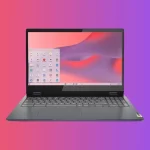Internet can help connect people, find work or learn new skills; but access may be difficult if money is an obstacle.
There are various government programs that offer low or no cost Internet services, while cable and phone companies sometimes provide this access free to households meeting certain income thresholds.
AT&T Access
AT&T Access is a program that makes high-speed internet more accessible for low-income households by offering affordable plans and free Wi-Fi gateway/modem, as well as professional installation to ensure everything is set up properly.
AT&T Access provides internet speeds up to 10Mbps at a competitive price, making them suitable for browsing the web, using social media and video calling, video chatting with family and friends over Skype and streaming HD quality videos.
AT&T Access program is part of the federal Affordable Connectivity Program (ACP). It helps eligible households save up to $30 monthly on internet and wireless services by applying at a local AT&T store or online. You can apply for this program via their store locator page.
Cox ConnectAssist
Cox ConnectAssist is an innovative new program to assist low income households gain access to the internet. For just $30 a month and including modem rental fees, this plan offers speeds up to 100 Mbps – more than enough speed for most households.
This program is available to households enrolled in means-tested government assistance programs like SNAP, TANF, LIHEAP, Head Start, Section 8 or Public Housing. The application process is easy and can be completed online; once processed customers will be informed about their eligibility status.
Closing the digital divide requires all stakeholders to step forward. Cable operators like Cox have an obligation to help expand internet affordability. Recently, they doubled download speeds on low-cost internet tiers Connect2Compete and ConnectAssist from 50 Mbps to 100 Mbps to demonstrate their commitment to digital equity and closing gaps for families in need.
Lifeline Support
Internet access is an indispensable element of daily life: homework completion, job searches, banking transactions and connecting to remote health services are all dependent upon it. Luckily, broadband service can be made affordable for low-income households thanks to various programs.
In 2016, the FCC issued its 2016 Lifeline Modernization Order and added broadband as an eligible support service, set minimum service standards for lifeline-supported services, and established a national eligibility verification system in an effort to improve both its quality and efficiency. These changes aim to strengthen this program’s capacity.
Even with these efforts, low program awareness remains one of the major barriers to participation. According to 2021 research conducted by Benton Senior Fellow John Horrigan, only 23 percent of low-income Philadelphia residents had heard about Emergency Broadband Benefit, PHL ConnectED program or discounted broadband offerings from providers like Comcast and T-Mobile. Communities must prioritize outreach and communications efforts; funding community anchor institutions like public libraries is one way communities may do this.
Devices for Students
Digital learning has quickly become the standard, making it essential that students have access to devices capable of connecting to the internet. Without such devices, students would not have access to all the educational resources and information online that can help improve their social status, support their families financially and ultimately lift them out of poverty.
Many schools are taking steps to address this issue by providing devices or partnering with companies offering low-income students free device deals. Other schools are connecting their students to local digital infrastructure like libraries, community groups and even households.
Francis Marion School District in rural Marion, Alabama partnered with AT&T to equip its students with tablets bundled with internet service during a pandemic when schools were closed. Students must keep these devices with them at all times or face fines if they lose them; additionally, students should register them with the technology department to ensure they’re returned upon returning them to school.











